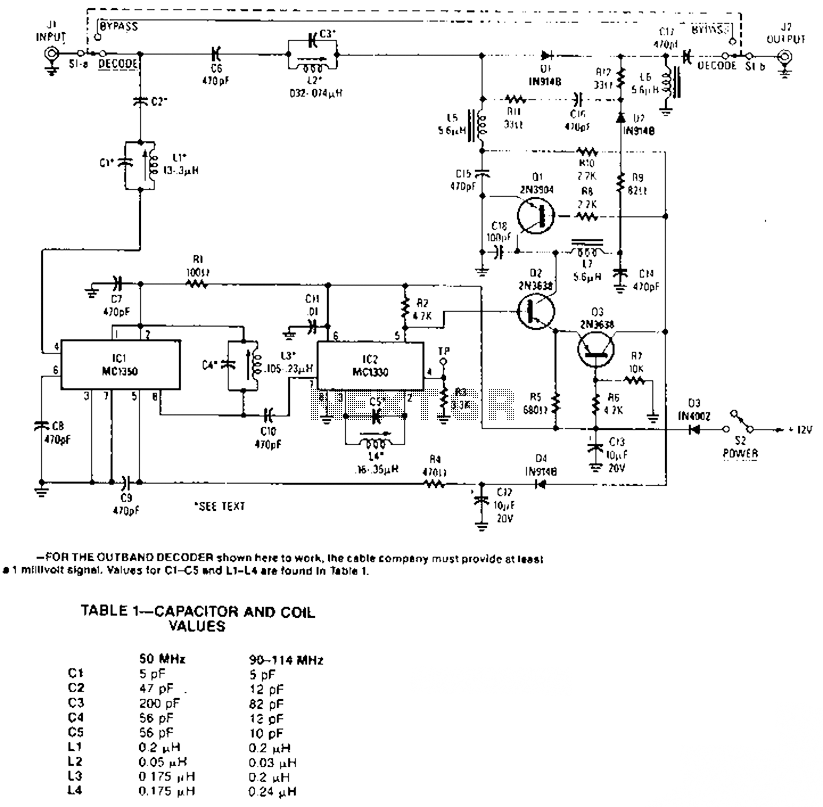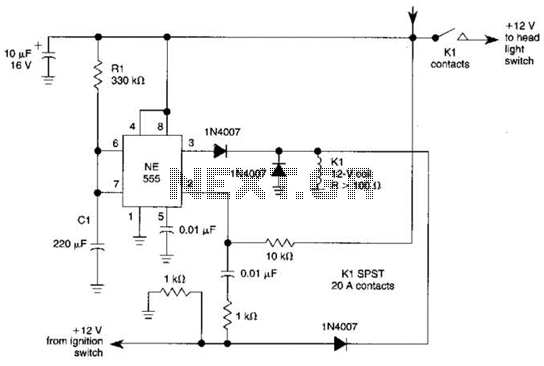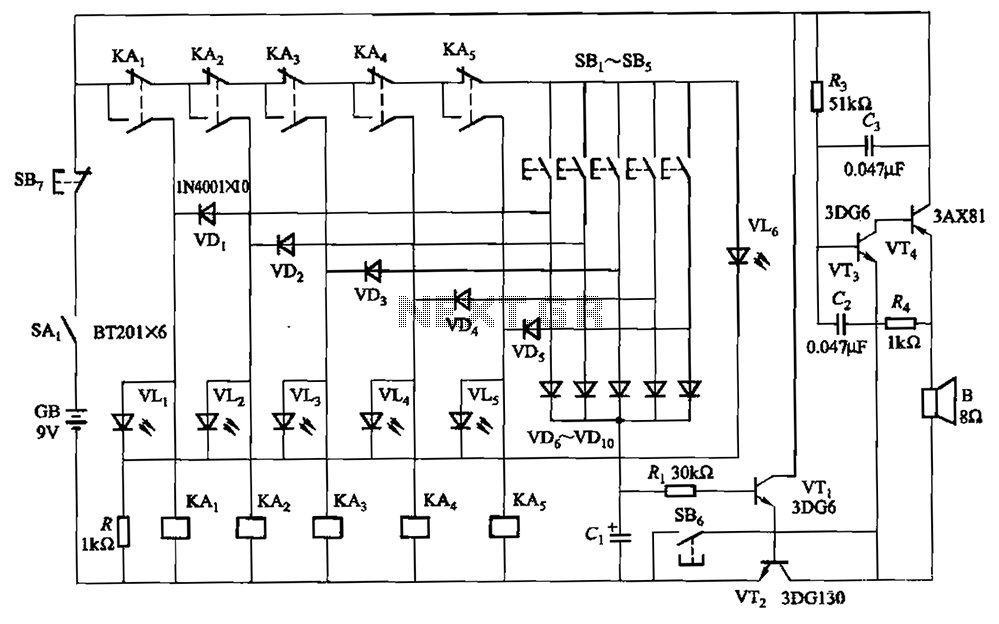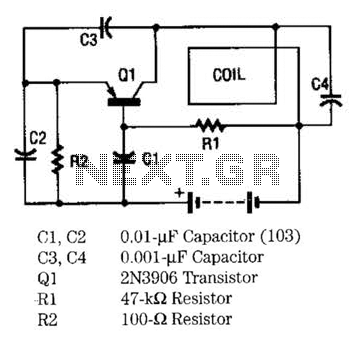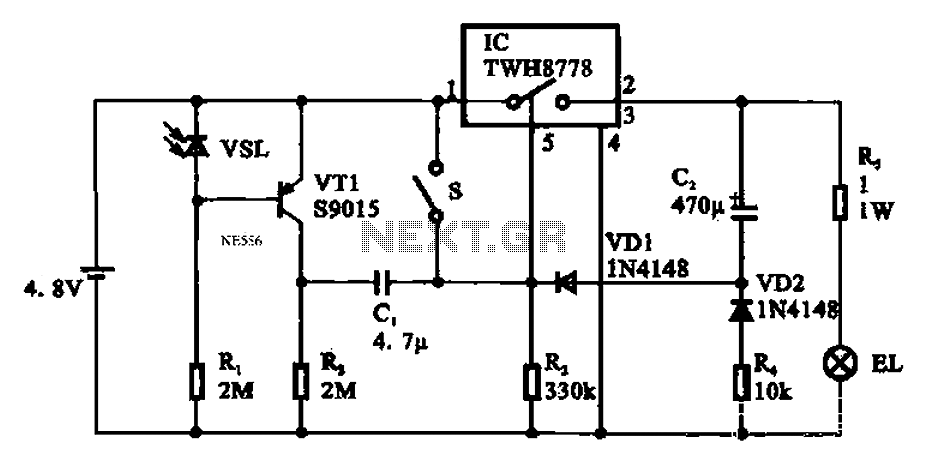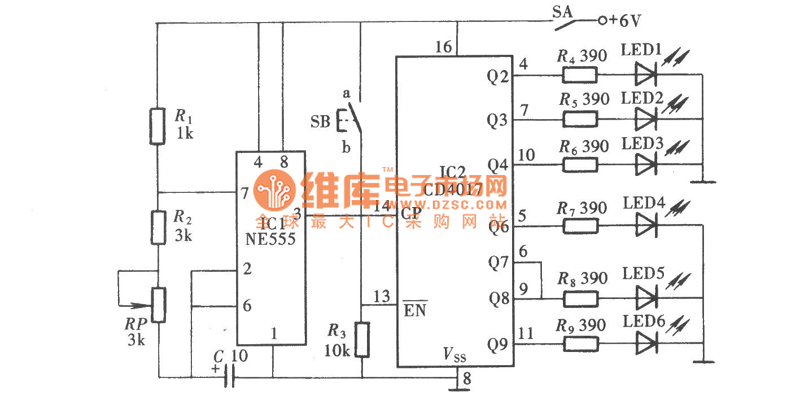
ECG FM demodulator circuit diagram
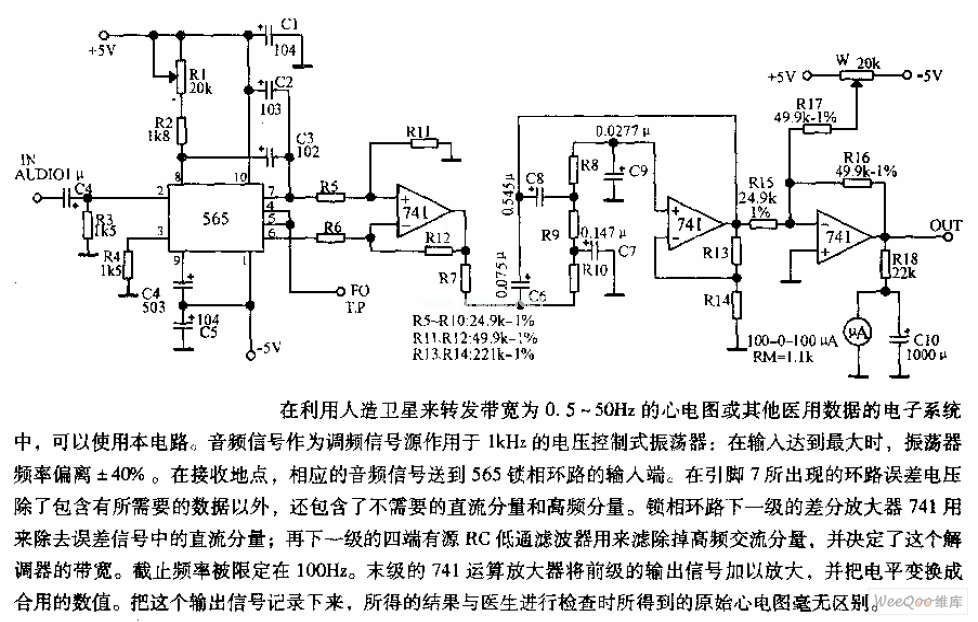
The circuit is designed for satellite transmission of ECG signals with a bandwidth range of 0.5 to 50 Hz, as well as other medical data within electronic systems. An audio signal serves as the FM signal source, which is applied to a 1 kHz voltage-controlled oscillator. When the input signal reaches its maximum, the oscillator exhibits a frequency deviation of ± 40%. At the receiving end, the corresponding audio signal is transmitted.
The described circuit serves a critical role in the transmission of medical data, particularly ECG signals, over satellite communications. The bandwidth of 0.5 to 50 Hz is specifically chosen to accommodate the frequency characteristics of ECG signals, which are essential for monitoring heart activity. The use of an audio signal as the FM signal source allows for efficient modulation, utilizing frequency modulation techniques to encode the ECG data onto a carrier wave.
The voltage-controlled oscillator (VCO) operates at a nominal frequency of 1 kHz, which is suitable for the modulation of low-frequency medical signals. The VCO's ability to deviate by ± 40% from its center frequency ensures that the circuit can adapt to variations in the input signal amplitude, thereby maintaining signal integrity during transmission. This frequency deviation is crucial for accurately representing the ECG waveform and other medical data, ensuring that the information received is both reliable and precise.
At the receiving end of the system, the corresponding audio signal is demodulated to retrieve the transmitted ECG data. This process involves filtering and amplification stages to ensure that the received signal is clear and free from noise, which is vital in medical applications where data accuracy is paramount. The overall design emphasizes low power consumption and high fidelity, making it suitable for use in portable and remote medical monitoring systems.
In summary, this circuit is a sophisticated solution for satellite-based transmission of vital medical data, leveraging FM modulation techniques and robust signal processing to ensure accurate and reliable communication of ECG signals.The circuit is suitable for satellite to transmit the ECG with bandwidth in 0.5 ~ 50Hz or other medical data in electronic systems. Audio signal is used as FM signal source applied to the 1KHz voltage controlled oscillator: when the input is maximum, the oscillator frequency deviation is ± 40%.
In the receiving place, the corresponding audio signal is sent.. 🔗 External reference
The described circuit serves a critical role in the transmission of medical data, particularly ECG signals, over satellite communications. The bandwidth of 0.5 to 50 Hz is specifically chosen to accommodate the frequency characteristics of ECG signals, which are essential for monitoring heart activity. The use of an audio signal as the FM signal source allows for efficient modulation, utilizing frequency modulation techniques to encode the ECG data onto a carrier wave.
The voltage-controlled oscillator (VCO) operates at a nominal frequency of 1 kHz, which is suitable for the modulation of low-frequency medical signals. The VCO's ability to deviate by ± 40% from its center frequency ensures that the circuit can adapt to variations in the input signal amplitude, thereby maintaining signal integrity during transmission. This frequency deviation is crucial for accurately representing the ECG waveform and other medical data, ensuring that the information received is both reliable and precise.
At the receiving end of the system, the corresponding audio signal is demodulated to retrieve the transmitted ECG data. This process involves filtering and amplification stages to ensure that the received signal is clear and free from noise, which is vital in medical applications where data accuracy is paramount. The overall design emphasizes low power consumption and high fidelity, making it suitable for use in portable and remote medical monitoring systems.
In summary, this circuit is a sophisticated solution for satellite-based transmission of vital medical data, leveraging FM modulation techniques and robust signal processing to ensure accurate and reliable communication of ECG signals.The circuit is suitable for satellite to transmit the ECG with bandwidth in 0.5 ~ 50Hz or other medical data in electronic systems. Audio signal is used as FM signal source applied to the 1KHz voltage controlled oscillator: when the input is maximum, the oscillator frequency deviation is ± 40%.
In the receiving place, the corresponding audio signal is sent.. 🔗 External reference
